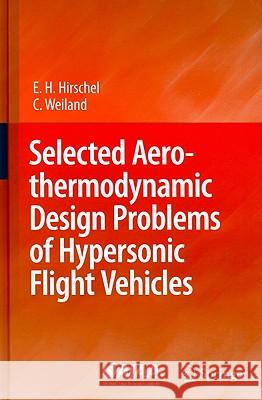Selected Aerothermodynamic Design Problems of Hypersonic Flight Vehicles » książka
Selected Aerothermodynamic Design Problems of Hypersonic Flight Vehicles
ISBN-13: 9783540899730 / Angielski / Twarda / 2009 / 512 str.
Selected Aerothermodynamic Design Problems of Hypersonic Flight Vehicles
ISBN-13: 9783540899730 / Angielski / Twarda / 2009 / 512 str.
(netto: 576,41 VAT: 5%)
Najniższa cena z 30 dni: 578,30
ok. 22 dni roboczych.
Darmowa dostawa!
Hypersonic ?ight and aerothermodynamics are fascinating topics. Design problems and aerothermodynamic phenomena are partly very di?erent for the various kinds of hypersonic ?ight vehicles. These are and will be in the future winged and non-winged re-entry vehicles as well as airbreathing cruise and acceleration and also ascent and re-entry vehicles. Both authors of the book worked for almost four decades in hypersonics: at the German aerospace research establishment (DVL/DFVLR, now DLR) to the end of the 1970s, then in industry (MBB/Dasa, now EADS). They were involved in many major technology programs and projects. First, in the early 1970s, the German ART program (Association for Re-Entry Te- nologies), and, in the 1980s, the European (ESA) HERMES project and the ] German Hypersonics Technology (SANGER) program. Then followed, in the 1990s, the Future European Space Transportation Investigations program (FESTIP), the Manned Space Transportationprogram(MSTP) with the - mosphericRe-EntryDemonstrator(ARD), theX-CRVProjectwiththe X-38 vehicle and, later, the German technology programs TETRA (Technologies for Future Space Transportation Systems), ASTRA (Selected Systems and Technologies for Future Space Transportation Systems Applications), and IMENS (Integrated Multidisciplinary Design of Hot Structures for Space - hicles). Research in the 1960s and 1970s placed great emphasis on low-density ?ows, high temperature real gas e?ects in ground-simulation facilities and, already, on discrete numerical computation methods. After the ?rst ?ights of the Space Shuttle Orbiter with its generally very good aerodynamic p- formance, interest in low-density problems diminished."











